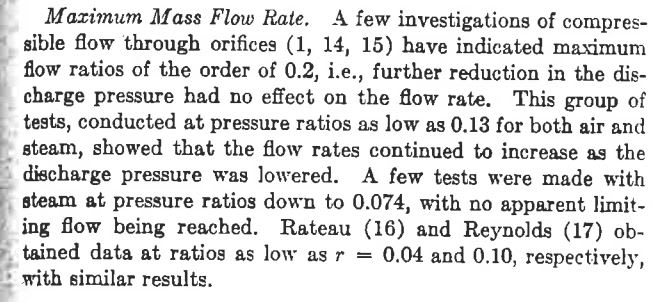sinhock
Chemical
- Oct 7, 2021
- 4
I've selected a 2" Restriction Orifice RO bore size 0.54" with process condition P1=790kPag, P2=110kPag, Q=18350 Sm3/d, T=15C on Utility Air. The sizing tells me I have critical dP=418 kPa meaning my predicted P2=372kPag. Is it true even though the RO is at choke flow and can only handle press drop of 418 kPa, the pressure at the RO outlet is going to be 110 kPag because 110 kPag is my available process back pressure? Or is my P2=372 kPag then eventually gets to 110 kPag further downstream from the RO? Downstream of the RO goes into a vessel and out into a pond so estimate distance between RO and pond is 100ft.
sinhock
sinhock


